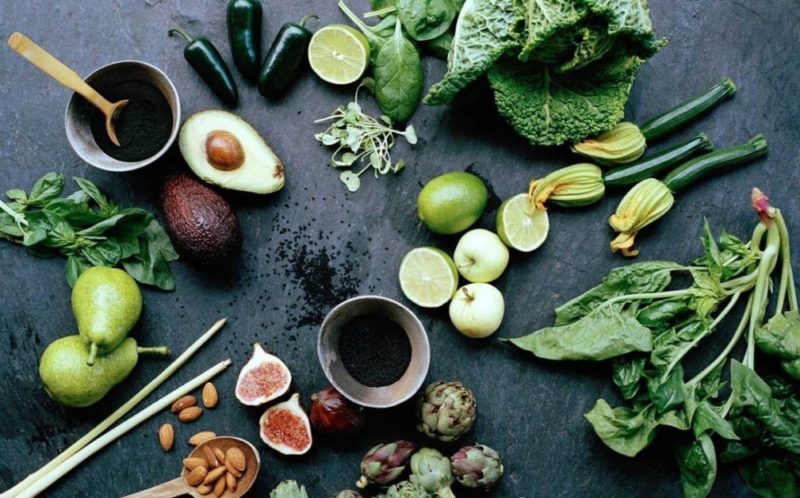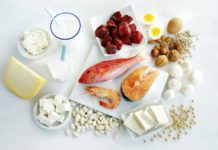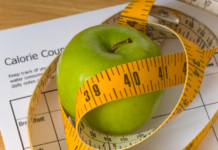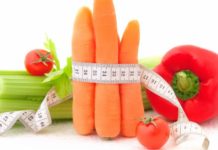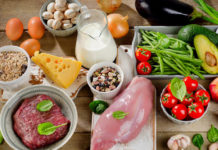In some cases, when compiling a diet, it becomes necessary to take into account the glycemic index of foods used in food. This parameter is characterized by carbohydrate food - the indicator is directly related to the rate of its digestion and the level of glucose in the blood.
Material Content:
What is the glycemic index
The acronym GI hides the so-called glycemic index. So it is customary to call a coefficient showing how quickly the body takes carbohydrates, and how much more sugar in the bloodstream becomes because of them. It is measured on a scale from zero to hundreds: if there are no carbohydrates in food, its value is 0, glucose without adding anything is 100.
The glycemic index must be known in order to understand how a particular carbohydrate product affects the change in the amount of glucose inside the body. Blood sugar is measured 120 minutes after taking a specific product. The lower the blood sugar level, the slower the process of assimilation. Useful slow carbohydrates give this result. Food with a high value is absorbed faster, carbohydrates dissolve rapidly and contribute to a sharp jump in sugar, and with it insulin. These are harmful fast carbohydrates.
Benefits of Low GI Foods
You need to think through the menu, including in it more healthy, long carbohydrates. They are absorbed longer, do not provoke sharp jumps in sugar concentration. With such food, the pancreas secretes protein hormone in a smaller amount, which reduces the likelihood of fat accumulation.
The diet, in which "long" carbohydrates predominate, makes it possible to actually lose weight due to the breakdown of fat, not muscle.
Why else is this useful:
- The balance of the amount of fat in the blood.
- The ability to prevent various diseases of the cardiovascular system.
- This diet is useful for people with chronic diseases, women during pregnancy or lactation.
- This is the basis for proper nutrition, in which there is almost no feeling of hunger.
- The body is cleansed, all systems work better. Metabolism is normalized, the energy supply is constantly maintained.
- The risk of developing breast cancer is reduced.
- Suitable for polycystic ovary.
- Improves eye and brain function.
- Eliminates acne.
- Helps improve athletic performance.
A GI-calculated power system is suitable for continuous use.
Throughout life, the parameters of frequently eaten foods are easy to remember, and therefore manage to make up a menu over time without hesitation. In addition, a well-designed diet, taking into account the glycemic index of products, allows you to adjust the level of sugar in the blood.
But to lose weight, just a calculation of GI is not enough. Yes, this practice contributes to weight loss, but only if you normalize the calorie intake. If you eat the same amount of calories, but the foods will have a different glycemic index, excess fat will go away faster if you comply with GI standards.
Factors Affecting the Glycemic Index of Products
There are some factors that alter GI to some extent.
Consider the most revealing of them:
- If sugar, salt, sauce, additives are added to food, the indicator increases. Sour food or the addition of acid reduces it.
- Overripe fruits and vegetables have a higher glycemic index than usual. Green banana - 40, ripe - 65, overripe - more than 80.
- Shredding plant foods increases GI because it takes less time to digest it. It is lower for apple, tomato or cereal than for apple and tomato juices or chopped cereals.
- Any treatment increases the rate. In oatmeal, it will be less than in oatmeal. Heat treatment, however, increases GI sometimes several times. For example, in raw carrots it is 35 units, and in boiled carrots - 85.
- The amount of water in the cooking process also affects the discussed parameter. The more water, the higher it is.
- The way the product is processed is also important. Dietary loaves have less GI than cereal bread. And he, in turn, has less than a lush white roll.
- With the simultaneous use of carbohydrates with proteins, GI is reduced. And in combination with some dairy products it gets a little higher. If you add a few healthy fats, then a decrease in GI will follow.
- Adding water-soluble fiber in the cooking process will reduce the overall GI of the dish.
The age of a person, metabolic rate, certain diseases, the state of the immune system, inflammatory processes in the body, the level of physical activity - all this affects the quality of carbohydrate absorption.
High and Low GI Products Table
There is a category of foods that increase sugar more than simple glucose.
Their GI is more than a hundred:
- cereals in breakfast cereals - 132;
- rice noodles - 131;
- baked or boiled potatoes - 118;
- boiled polished rice - 112;
- vegetable sucrose - 110;
- beer - 110;
- crisp pastry cookies - 106;
- malt sugar - 105;
- maltodextrin in children’s and athletes ’nutrition as a sugar substitute - 105-135;
- dried dates - 103;
- sweet watermelon - 103.
These foods are not recommended to eat a lot and often.
Table of products with a glycemic index of more than 70:
| Title | Indicator |
|---|---|
| white flour bread, glucose, starch | 100 |
| turnip | 99 |
| muffin, pancakes, potato casserole, fried potatoes | 95 |
| apricots (canned food) | 91 |
| honey, polished rice, gluten-free bread | 90 |
| cooked carrots, burger rolls, rice dessert milk pudding, unsweetened popcorn, instant porridge | 85 |
| mashed potatoes | 83 |
| biscuits, cereals with nuts, raisins | 80 |
| dumpling | 76 |
| french roll, pumpkin, sugar-free waffles, rice in milk, soft wheat lasagna | 75 |
| millet | 71 |
| milk chocolates, chocolate bars, sodas, croissants, white and brown cane or beet sugar | 70 |
| barley, semolina, couscous from wheat, risotto on white rice, soft wheat noodles, potato chips, dumplings | 70 |
If possible, remove this food or reduce its consumption as much as possible.
Types of products with an average index:
| Title | Indicator |
|---|---|
| white flour | 69 |
| pineapple oatmeal quick flakes | 66 |
| cereal sweet granola, dried grapes, jelly jam, marmalade, orange juice from a bag, maple juice syrup, pineapples (canned food), sorbet ice cream | 65 |
| rye, grain and black yeast bread, sweet potatoes, boiled potatoes in their skins, stewed or boiled beets, canned vegetables | 65 |
| pasta | 64 |
| germinated wheat | 63 |
| wheat pancakes | 62 |
| classic pizza (cheese + tomatoes) | 61 |
| bananas, melon, chestnuts, ice cream, sweet cocoa | 60 |
| long grain rice, oatmeal, shop mayonnaise | 60 |
| fresh melon tree fruit | 59 |
| fresh pita, canned corn | 57 |
| shortcrust pastry, unsweetened grape juice, mustard seed sauce, ketchup, bulgur groats, spaghetti, peaches (canned food), sushi | 55 |
| persimon, lychee, actinidia, mangifer, cranberry juice, apple and pineapple are not sugared, brown rice and basmati unpeeled | 50 |
This product category has a low glycemic index. They can be included in the daily diet, but do not make it the basis.
Table of products with a low glycemic index:
| Title | Value |
|---|---|
| ice cream and fresh cranberries | 47 |
| fresh orange drink, unsweetened grapefruit juice, grapes, coconut, Indian brown flavored basmati rice, dried grain bread, green peas (canned) | 45 |
| breakfast cereals, whole grains, unsweetened | 43 |
| prunes, dried figs, dried apricots, buckwheat, cooked pasta almost ready, carrot juice without sugar | 40 |
| turkish peas, zitsaniya, beans with meat, sesame seeds, noodles or vermicelli short Chinese, soy sauce classic, seed peas, French mustard | 35 |
| fructose ice cream, natural non-fat yogurt, fresh fruits (apples, quit apple, orange, plum) | 35 |
| dried tomatoes, not sugary compotes, beans, fresh ordinary peaches, nectarines, pomegranates | 34 |
| tomato juice | 33 |
| yeast | 31 |
| fresh grapefruit, duches, yellow creamer, gonobel, boletus, blueberry, passion fruit, mandarin | 30 |
| plain, almond and soy milk, low-fat cottage cheese, yellow and brown lentils, garlic | 30 |
| fresh carrot, chard, tomato, non-sweet jam, green beans, chocolate with cocoa from 70% | 30 |
| raspberries, prune berries, strawberries, wigs, agrest, strawberries | 25 |
| pumpkin seeds, mung bean, soy flour, green lentils | 25 |
| kumanika, badrijan, artichoke, soy-based yogurt, unsweetened peanut paste | 20 |
| cashews, almonds, hazelnuts, pine and voloshki nuts, pistachios, peanuts, olives | 15 |
| cabbage, cauliflower, Brussels sprouts and broccoli, zucchini, fresh, pickled and pickled cucumbers, green onions and onions, ginger root | 15 |
| celery, chili, asparagus beans, rhubarb, spinach, soybeans, tofu, pesto sauce, mushrooms, bran | 15 |
| persea, sweet pepper | 10 |
| sowing salad | 9 |
| cinnamon | 6 |
| oregano, basil, parsley | 5 |
These products can be consumed in any quantity. Reasonably, of course.
List for Diabetics
In a person with a normal metabolism, excess sugar is transformed into fats, and its blood level returns to normal again. If a person with diabetes eats food with high GI, his insulin production is disturbed, as a result of which the sugar concentration rapidly rises, causing pathological conditions.
For this reason, acidic foods are useful for diabetics. Among them, for example:
- citrus;
- pineapples
- grenades;
- green apples
- cherry;
- plums
- cranberry;
- lingonberry;
- blackberry.
These berries and fruits can be consumed up to 0.3 kg per day. In any quantity, vegetables from the last list are allowed.
The allowed number of hotel common foods and dishes:
- bread (grain, black) - no more than 200 g per day;
- vegetable broth soup - serving every day;
- soup from low-fat fish or meat second broth - every other day or less;
- cereals and legumes without bread, sometimes pasta from durum wheat - serving daily (and reduce other carbohydrates this day);
- rice and semolina - not allowed;
- starchy vegetables (potatoes, beets, carrots) - less than 200 g per day;
- eggs or egg whites - twice a week;
- dairy products - not more than 400 g per day;
- sour cream and cheese - not every day.
Important! Each pathological condition of the body has its own characteristics. Therefore, only the doctor will tell the exact list of allowed products and their allowable amount for a particular disease.
Low GI, High Nutrition Index Products
Common foods indicating nutritional value (maximum - 100):
| Title | Level |
|---|---|
| cabbage in heads of cabbage, Brussels sprouts, white radish, lettuce, parsley | 100 |
| asparagus, asparagus cabbage, artichoke, cucumber, celery, green beans, zucchini, peas | 97 |
| cauliflower, bell pepper, eggplant | 50 |
| beans, soybeans, lentils | 48 |
The nutritional value of each type of product depends on its composition. Fats and proteins are not taken into account.
Counting GI products will help you lose weight and maintain harmony. For diabetics, such a practice is a vital necessity.



